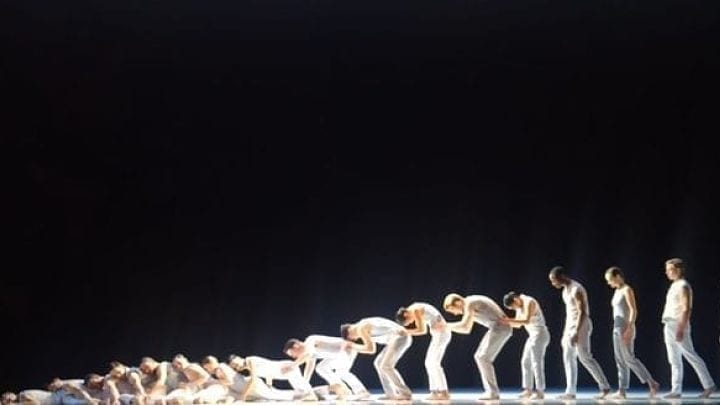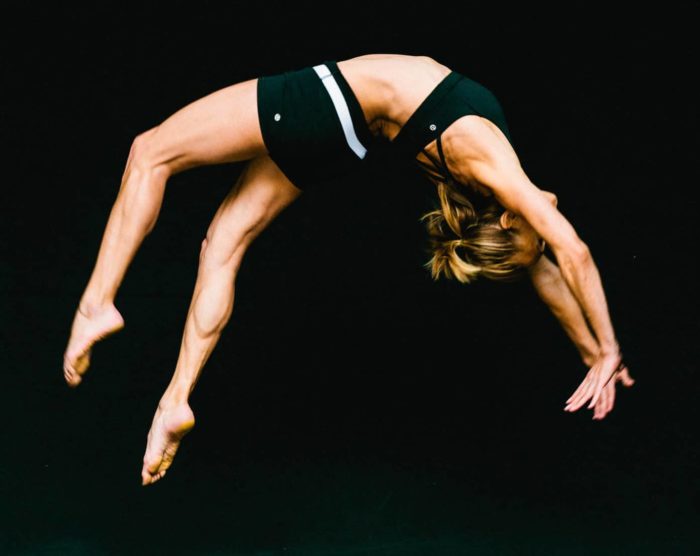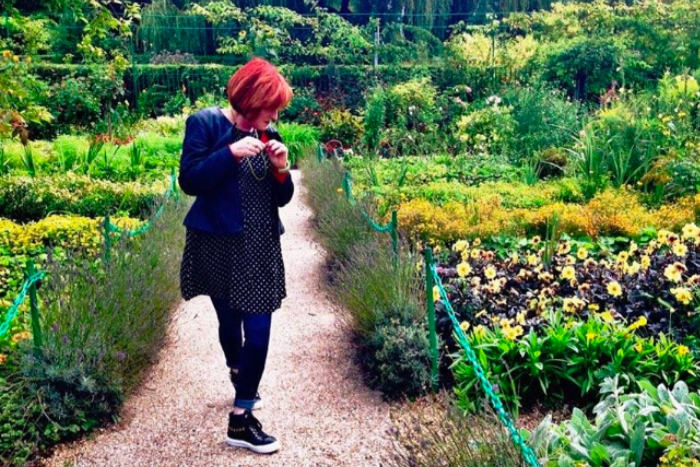
(Photo: Todd Rosenberg, 2016 – Hubbard Street Dance Chicago; Choreography by Brian Brooks)
“I think I’ll go on a walkabout to find out what it’s all about,” sing the Red Hot Chili Peppers.
Ever take a walk and just think about things? You simply start to walk while you’re thinking.
You keep on walking and addressing the issues. They might be concerns, feelings of stress, or conflicts of intimacy or power.
Since you’re wandering it doesn’t matter where you go. You become preoccupied, entranced, on cloud nine. Perhaps your journey has no other function than to form a question or deepen your inquiry.
It’s like going on a walkabout. (“The Emotional Walkabout” is a self-inquiry meditation from the book, Emotional Yoga by Bija Bennett)
An Emotional Walkabout is what happens when you follow your feelings and let them lead you along the way. In an Emotional Walkabout, you notice, you pay attention, and this makes you get involved with what’s happening in your life right now — the phone conversation you just had, the job you don’t like, the feeling of uncertainty you woke up with this morning. Dealing with simple events such as these is the basis of your emotional health, and the purpose of a walkabout.
The true goal of an Emotional Walkabout is freedom — because every time you do it, you free yourself. You free yourself not to know the answers but to explore them. You free yourself to trust in your instincts. You free yourself to discover and allow yourself to change.
The truth is, you can always choose new ways of doing things.
It takes courage to listen to yourself and see what emerges. So much can come tumbling out — your vulnerability, sadness, or pain. Still, an Emotional Walkabout is your training for emotional survival.
By practicing the Emotional Walkabout, you’ll feel a greater sense of freedom and emotional confidence.
There are eight steps or inquiries in the Emotional Walkabout. It’s practiced through a step-by-step process of discernment or inquiry. At each step, you’ll form a question and listen to the reply. The answer you receive will be an answer from you, to you. Anything that comes to your mind is a legitimate answer, and moves you forward to the next question.
The questions used in the Walkabout are best followed in sequential order. You can repeat the process many times until you feel comfortable with your answers. And you can write down your answers so you can review them. But whenever possible, try to go through at least one entire eight-step process in each session.
Start with question #1 and the answer you get will provide you with a direction for the next question, and so on.
Each of the steps provides you with part of the answers. Don’t dismiss any of your answers. Listen and hear the answers arise from deep inside you. Honor your answers, even if you don’t understand them.
Self-transformation begins anytime you pay attention, especially when you pay attention to yourself. All you have to do is begin from wherever you are and the rest will take care of itself. It’s simply your internal process of revelation.
To start the Walkabout, first ask yourself a question: What do I want this process to be about? Listen for an answer, then begin your walkabout.
Step 1. Allowance: Bringing into focus.
Allow me to see what is creating this situation, emotion or feeling.
Step 2. Allegiance: Taking the steps.
Show me the steps I can take to deal with this feeling, person, or situation.
Step 3. Will & Power: Cooperating with yourself.
How do I cooperate with myself so that I can follow through on these steps?
Step 4. Love: Discerning the differences.
How do I discern whether I should join with something or release myself from it?
Step 5. Harmony: Seeing the bigger truth.
What are the key things I need to focus on to have a balanced perspective?
Step 6. Knowledge: Knowing the past.
How many times in the past have I experienced these same relationships, feelings or issues? (Did it work? How can I deal differently?)
Step 7. Wisdom: A vision of possibilities.
What are all of the possibilities that may result in my life from making these choices? Is there another fear that may be behind this fear? (Or go back to the beginning)
Step 8. Synergy: Integrating the answers.
Acknowledge your life right now and feel the synergy of your answers, allowing your total participation to be present and in the moment.
Use the Emotional Walkabout to create an “internal ritual” for yourself that will help you participate with the events and people in your life. As you practice the Walkabout on a regular basis, you’ll experience deeper levels of emotional awareness.
Get my book “Emotional Yoga: How the Body Can Heal the Mind” and learn more about the Emotional Walkabout.

Get cutting-edge info on the latest wellness trends.
Sign up for Bija’s monthly newsletter.
